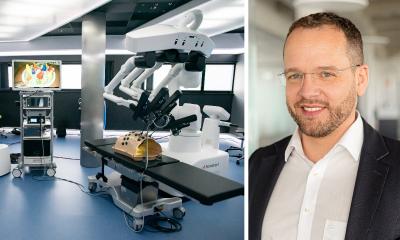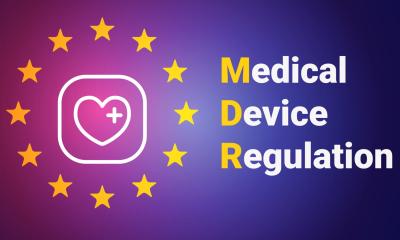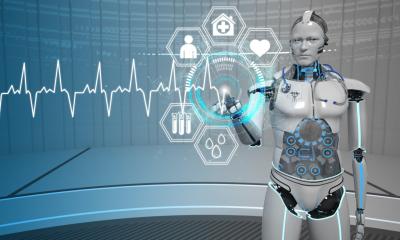Reimbursement for new medical technologies
Olaf Winkler, Head of Department for Healthcare at BVMed, the German Medical Technology Association, outlines the obstacles that must be overcome to integrate medical technology into the standard hospital reimbursement system after successful studies and CE certification

A current study by the German Federal Ministry of Education and Research (BMBF) concludes that there are no significant obstacles to the introduction of innovative medical technology in Germany. The study presents, for the first time, a comprehensive and systematic analysis of obstacles to innovation for the integration of new medical technology into the German market and healthcare system. The innovation climate is also largely judged to be satisfactory to good by international comparison.
However, there are two phases in medical product development that the experts assessed to be difficult. The first is the clinical research and validation of innovative medical technology, i.e. performance appraisal of the medical use. The next is the integration into the medical reimbursement system by the statutory medical insurers. In effect, this second hurdle is the real challenge for manufacturers and hospitals. Companies assess the entire situation as worse than research institutions and hospitals do. To make matters worse, in Germany the relevant expertise in medical technology and clinical research has limitations. From the companies’ and research institutions’ viewpoints the identification and cooperation with a suitable clinical partner who knows about the respective, specific competency profile for a certain medical indication – i.e. a hospital – is a major challenge. Improved information presentation of competency profiles is needed.
Secondly, there is a bottleneck during the phase where innovative medical technology is integrated into the reimbursement system of the statutory medical insurers. The majority of the experts consulted judged this process, based on the increasing regulations, as comparatively longwinded, highly complex and not user friendly, or not transparent enough, in both the in-patient and out-patient sector.
There is a significant lack of information regarding the integration of innovations into the standard reimbursement system. There are no actual barriers against access to innovations in the German hospital market. The principle of permission subject to prohibition applies, which means that new procedures can normally be integrated into the hospital supplies system without prior permission by the statutory medical insurers or the Federal Joint Committee. The actual obstacle lies in adequate reimbursement of these procedures. Through retrospective calculation of the DRG flat rate per case system it takes up to four years for the appropriate grouping of a new service/procedure into the flat rate per case system, or to work out the additional recompense, although an annual recalculation of the G-DRG system does take place. As an alternative, hospitals that need to introduce innovations quickly can apply for a new examination and treatment procedure. This application must be made annually by the 31 October. Moreover, the new technology must meet certain conditions, such as actually being confirmed as ‘new’, it must be confirmed that the costs are not adequately reflected and covered in the existing DRG catalogue. The evaluation system is carried out by the Institute for the Calculation of DRGs (InEK) on behalf of the self-administration partners.
In a case of positive assessment, an innovation reimbursement agreement can then be reached with the medical insurers for the following year. This reimbursement is outside the hospital budget and is paid in addition to the existing budget. However, the procedure has been too bureaucratic, not transparent and inflexible as each individual hospital has to make this application, and the negotiations with the medical insurers depend on their agreement. Based on estimates, the expenditure for these innovations is less than 1% of the entire hospital budgets.
For 2009, there are over 12,000 applications for new examination and treatment procedures, and there are 546 different methods and procedures. Overall, 5,400 applications with 87 procedures, 34 involving medical technologies, have been positively assessed and can now be negotiated for 2009.
With the passing of the Law on the Hospital Financing Reform (KHRG) in February, the legislator paved the way for the first improvements of the innovation clause in the DRG law. The confirmed change relating to new examination and treatment methods gives hospitals the opportunity to apply for reimbursement of innovative services for patients on a flexible basis, rather than to deadlines. It remains to be seen if and how this new rule is utilised. With the end of the regular convergence phase, from 2009 the significance of the new examination and treatment reimbursements fees has certainly increased because of their reimbursement outside the budget. However, it must be considered that spending on new examinations and treatments will be calculated via the base rate in the following year, and revenues for all hospitals will drop.
As an interim conclusion we can sum up that the purchasing decisions for the use of innovative medical technologies should be planned and prepared as early as possible, ideally during the study phase. An appropriate reimbursement is only recommended with a lot of input and a strategic approach. The BVMed Health System Guide – Introduction of Innovative and New Medical Products into the G-DRG system offers information and help with appropriate reimbursement. The guide can be ordered at: http://www.bvmed.de/themen/DRG-System/article/Healthcare_System_Guide.html
01.05.2009









